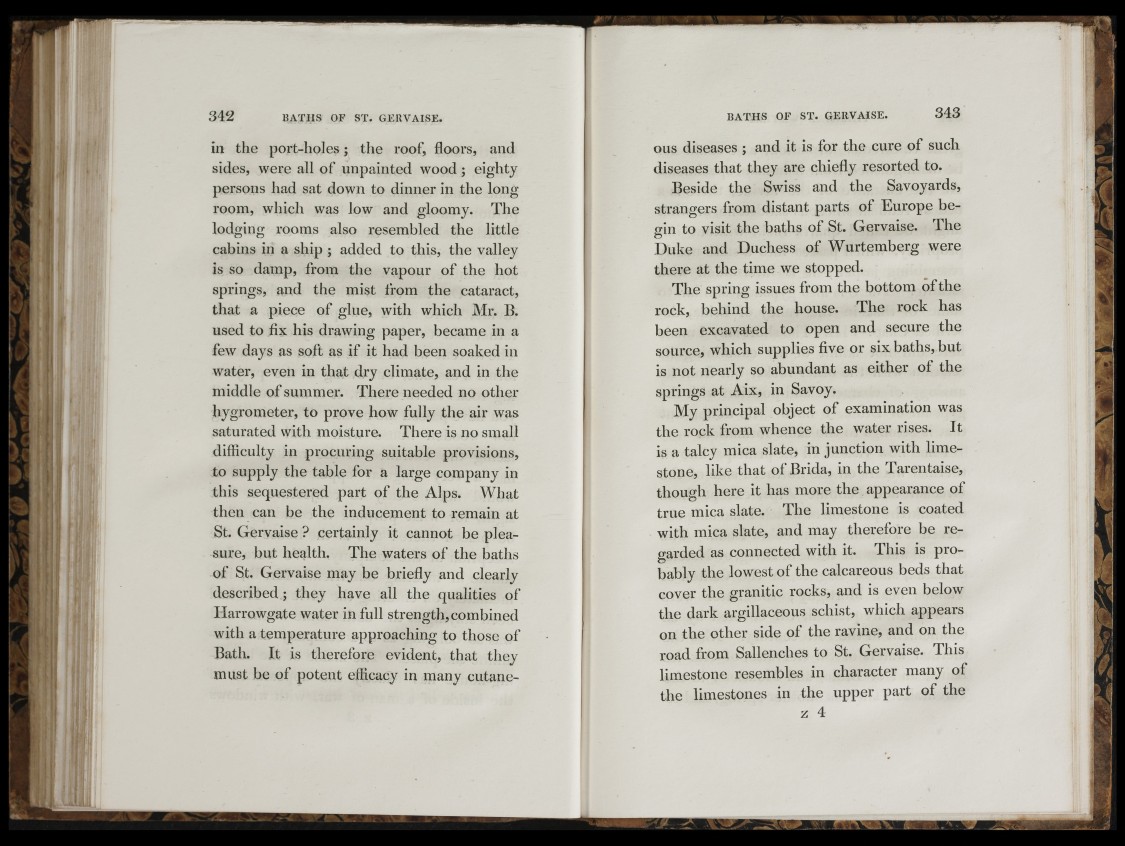
in the port-holes ; the roof, floors, and
sides, were all of iinpainted wood ; eighty
persons had sat down to dinner in the long
room, which was low and gloomy. The
lodging rooms also resembled the little
cabins in a ship ; added to this, the valley
is so damp, from the vapour of the hot
springs, and the mist from the cataract,
that a piece of glue, with which Mr. B.
used to fix his drawing paper, became in a
few days as soft as if it had been soaked in
water, even in that dry climate, and in the
middle of summer. There needed no other
hygrometer, to prove how fully the air was
saturated with moisture. There is no small
difficulty in procuring suitable provisions,
to supply the table for a large company in
this sequestered part of the Alps. What
then can be the inducement to remain at
St. Gervaise ? certainly it cannot be pleasure,
but health. The waters of the baths
of St. Gervaise may be briefly and clearly
described ; they have all the qualities of
Harrowgate water in full strength, combined
with a temperature approaching to those of
Bath. It is therefore evident, that they
must be of potent efficacy in many cutaneous
diseases ; and it is for the cure of such
diseases that they are chiefly resorted to.
Beside the Swiss and the Savoyards,
strangers from distant parts of Europe be-
ffin to visit the baths of St. Gervaise. The
Duke and Duchess of Wurtemberg were
there at the time we stopped.
The spring issues from the bottom ofthe
rock, behind the house. The rock has
been excavated to open and secure the
source, which supplies five or six baths, but
is not nearly so abundant as either of the
springs at Aix, in Savoy.
My principal object of examination was
the rock from whence the water rises. It
is a talcy mica slate, in junction with limestone,
like that of Brida, in the Tarentaise,
though here it has more the appearance of
true mica slate. The limestone is coated
with mica slate, and may therefore be regarded
as connected with it. This is probably
the lowest of the calcareous beds that
cover the granitic rocks, and is even below
the dark argillaceous schist, which appears
on the other side of the ravine, and on the
road from Sallenches to St. Gervaise. This
limestone resembles in character many of
the limestones in the upper part of the
I
z